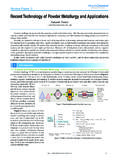Transcription of EV FORWARD VIEW - Renewable Energy Association
1 EV FORWARD view : jobs, infrastructure, and avision for the growth of electric Vehicles in the UKA to-the-point introduction for policy-makers and industry to key UK market developments and a FORWARD view for EV deployment to 2040. An REA Publication September 2017 The electric vehicle industry is going to develop rapidly. Already billions of pounds have been invested in R&D, manufacturing sites, new supply chains, and associated infrastructure, in the UK, Europe, and globally. The REA, the UK s largest trade Association for Renewable Energy and clean tech, forecasts that the shift away from both diesel and petrol vehicles will be more rapid than is currently anticipated by policy-makers and New Energy Finance anticipates that 50% of new car sales in the world will be EV by 2040, the year in which the UK Government has announced it will end the sale of new petrol and diesel cars and vans with no battery element1.
2 The REA sees this forecast as the most robust that is currently publically available, but does not fully account for the step-change that is likely to take place in this sector, akin to the evolution of solar PV or uptake of mobile phones. The shift to electric vehicles presents a range of new manufacturing and export opportunities for the UK post-Brexit, which is currently the fourth largest vehicle manufacturer in the EU2. It also presents a series of internal challenges, in particular regarding charging vehicles and upgrading electricity grid infrastructure.
3 The two issues are fundamentally interlinked, as the ability to create export products or expand the manufacturing base requires a robust domestic market, which in turn requires the creation of a reliable, affordable, low-carbon, and extensive electric vehicle charging UK s electric vehicle and Energy storage markets currently directly employ over 16,000 people, according to the annual publication REView 20173. This number is anticipated to significantly grow, but supportive public policy, ranging from increasing grid flexibility, to strengthening building codes, is critical if these industries are to fully analysis is informed by discussions with our network of member companies and the wider industry, both nationally and globally.
4 It is comprised of an analysis of key anticipated market developments, followed by a projected timeline and deployment forecast to 2040. The REA anticipates that: Total ownership costs for most electric vehicle owners could be lower than Internal Combustion Engine equivalents by 2020, depending on subsidies and taxations. This means the lifetime price of owning an EV, including fuel and maintenance costs, will be lower, resulting in consumer savings4. Bloomberg New Energy Finance s analysis (July 2017) estimating that producing a battery [pack] in a Korean manufacturing plant in 2017 costs $162/kWh, dropping to $74/kWh in 2030 will be reflective of cost reductions.
5 They estimate that battery pack prices have already fallen by 73% between 2010 and 2016. Some family cars will have batteries with a 350 mile range by 2019/20205. A full range of electric vehicles will be available in the future, including cars, some commercial vehicles, Different sized batteries will be used for different uses, similar to how one can currently purchase the same car model with different capacity fuel tanks. Other European and non-European nations may introduce a petrol and diesel vehicle ban ahead of the UK and France s confirmed timeline of 2040.
6 O The Netherlands is discussing the phase-out of internal combustion engines by 20256. o Germany is considering banning new petrol or diesel car sales by 2030, which would require the upgrading of the country s entire manufacturing processes and supply chain by then (Germany is the EU s largest vehicle manufacturer)7. o China s Government is considering a ban similar to the one being introduced by the UK, although has not yet announced a timeline8. Car manufacturers will have already stopped all further R&D on diesel cars this year.
7 Diesel car sales will continue to fall. With lower sales volumes the cost to manufacture them will rise until a point is reached where it is no longer economic to manufacture them. As electric car sales volumes rise they become cheaper to produce making them cheaper than HOW THE EV MARKET WILL EVOLVE IN THE UK INTRODUCTION petrol. The REA believes the opposite will be true for petrol cars with prices rising steeply in the next decade as fewer are sold and manufactured. The maintenance of two separate supply chains will be inefficient, and there will be attempts to bring the two more closely together, if not move to electric in full.
8 O Already most new car platforms are being designed around an electric engine, rather than a petrol one, or the ability to carry an electric drivetrain (BEV or PHEV). o R&D will drive manufacturers to continually optimise chassis development toward electric -only power units. Energy storage technologies will continue to improve over the next decade, with car makers increasingly pairing with battery storage developers so as to make use of surplus or used EV batteries9. Rapid advancements will be made around the speed of charging vehicles - plans are already in place in major car companies to have a 5 minute charge.
9 The technology now exists to do this10 although the REA believes such quick charging will only have select uses due to pressures this causes on the grid. Around 40% of car owners will not have home charging11. Many of these will rely on public charging, potentially at work and supplemented by facilities at supermarkets, public service car parks, or other larger social spaces, but these will be supplemented by charging hubs which may start to replace petrol stations. Infrastructure and charging networks need to be put in place now.
10 O A significant proportion of parking spaces at supermarkets, multi-storey car parks and surface car parks at key locations may need charging points to meet growing demand. Rapid or semi- rapid chargers may be appropriate at supermarkets etc. to suit the dwell time and enable greater throughput of vehicles. o All new houses should have three phase electricity supply for effective charging of electric Vehicles. o Other types of new build accommodation, such as blocks of flats and communities with shared parking, should also implement effective charging solutions to meet significant demand.













